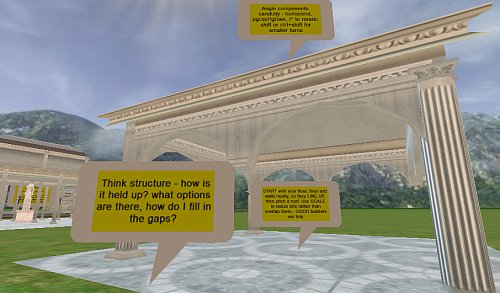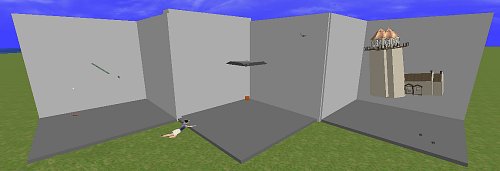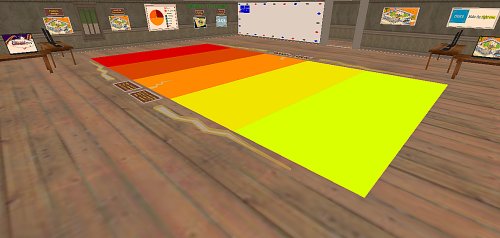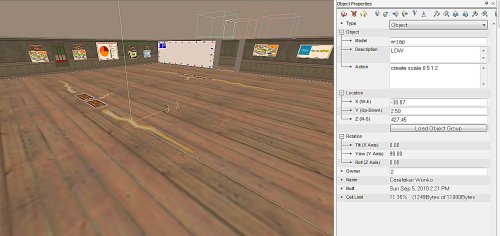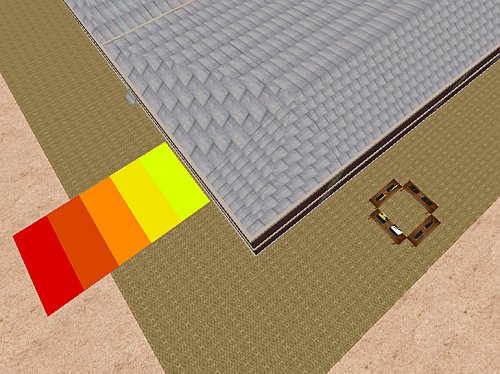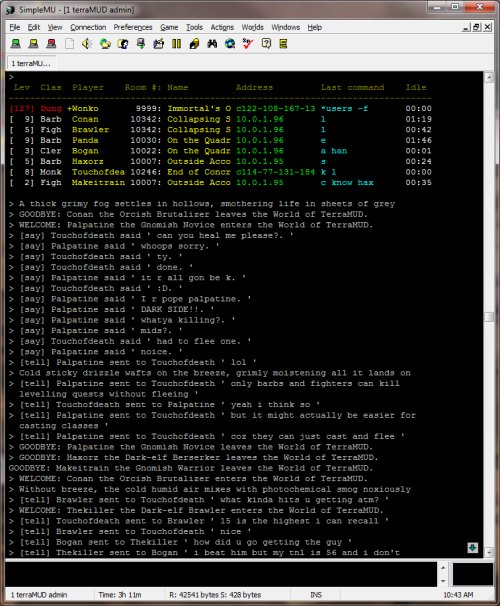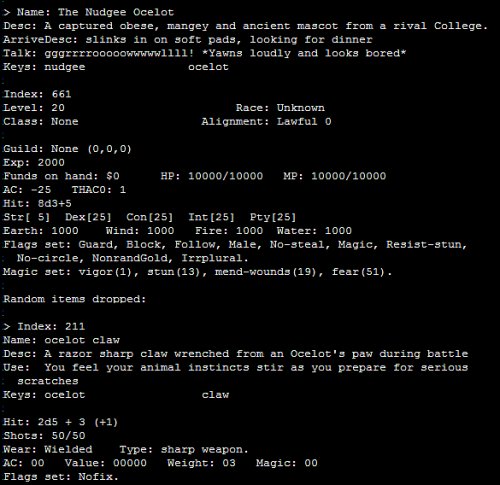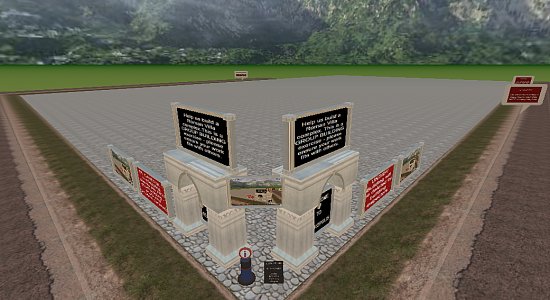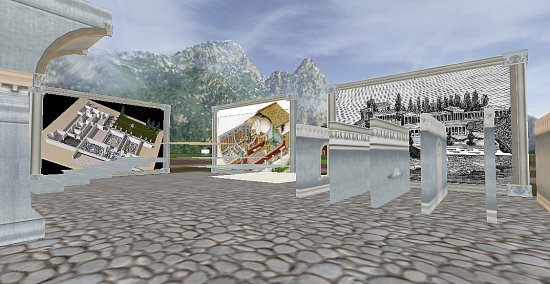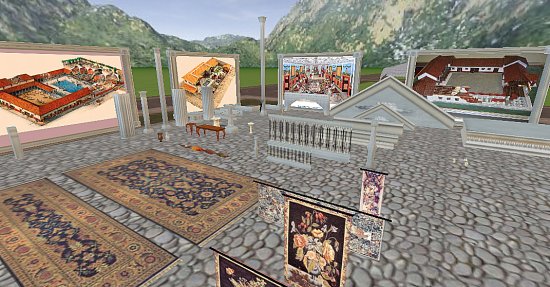iProcrastinate 1.01b
…lol
When I should have been busy marking, and other good teachery things, I found the virtual world a great place to just … do … stuff.
Sure, there is plenty to do – the cybernauts are entering the “build” phase of the investigation, so there is a real need for tutorial areas, exemplar builds and the like.
So I began shackling stuff together, to show how it can be done, tried to think through the process I use when building, and how that would translate for a noob.
The Cybernauts have been in, the Roman Villa and associated ruins are taking shape, we now have a market square, bath house, grand house, other assorted buildings – some are really getting into the spirit of the challenge, others are puddling away in “Sky City” – bottom line it does not matter where they practice to build, so long as they do. I even FILMED a walkaround for your viewing pleasure retrowalkaround
I got a little narky – wondered if, with a little careful scaling and rotating it would be possible to make a familiar building … 20 minutes later:
…a 1/4 scale version of the main concert hall roof structure (I love this place in the real world) – buggered if this does not solve a problem I was wrestling with over on Sci Prime – the roofline of my Observatory will be these familiar sails I think. We shall see.
The Object Catalog is gradually coming together, with a team of patient people popping and screen-grabbing objects for it over on SomaIII, will be seriously hoopy when done:
4 people working at a time, huge job (thousands of objects to index), progress being made, all good.
Half full, or half empty…
Activeworlds have a peculiarity (well, I think it is peculiar, and I think fairly unique for 3D worlds – correct me if I am wrong) in that each “cell” has a storage limit (measured in bytes). The upshot of this is that there is a LIMIT to how much data can reside at each point in the world, with objects and their definition and modifications taking up the space.
When you reach the cell limit (a 10x10m chunk that extends both UP into the sky and DOWN underground) the world actively prevents anyone from building anything more there. 11000 bytes seems a lot, but it is not if the object names are long, and the object contains much scripting, web references and so on. This is peculiar and potentially a huge problem in a world that we want kids (who may not be experts, geeks or, indeed should they need to care about such issues) making complex things.
I noticed this when puddling around in a multi-level building in a busy corner and wondered how I might “save some bytes” – you can do it “dirtily” by trimming off the “.rwx” of the object name, and shortening the action strings (small urls, minimal descriptions) and use large objects instead of lots of little ones … but sometimes, you know, you want it rich, varied and well described.
In reading user forums, it seems I am not the first to think this odd and inconvenient, but found a rather ingenious solution, let me explain…
So, this room is full of stuff for kids to explore and play with:
… a floor graph, some post boards, some interactives and so on and it all looks like it is ready to use – which, from the user’s perspective, it is.
What is interesting (well, I find it interesting) is that much of what you see here, is not …actually … there – it is defined elsewhere and slushes into its nominated positions via a MOVE command the instant it pops into existence:
Once you get the hang of this, you can cache huge chunks of stuff in previously unused space and have it moved automatically into use instantly:
I used a script similar to the following:
on create move 18 0 0 time=0 wait=9e9
…which means, when the object rezzes in-world, move it 18m in the X axis, 0 in Y and Z, then wait 9000000000 seconds before moving it back (yes, 9e9 is a fiarly odd number – for world purposes that is “forever”). Using this technique, so long as you know where the thing is to end up, you can move it there by script.
The _only_ caveat here is, as I discovered, if you want kids to work with the object by creating more around it – then you cannot use this technique because the moment you switch to edit move, the objects seemingly disappear back to their point of origin.
Still, learning something new is a good thing, right?
Let the chase begin …
…so in my text-based world (tmux), players like a group challenge – oddly (or more correctly characteristically) they like to band together to defeat a common enemy.
Now, borrowing heavily from Monty Python and “Ripping Yarns” by Palin and Jones, I had created an arch memesis – “The College Leopard” – a cute idea that there was an aging, mangey, near-toothless college mascot that would roam the corridors menacingly – the first leopard hunt was great fun – stuff of legends.
When the leopard retired – toothless and all shagged out, a new nemesis was born – a mascott from a rival college “The Nudgee Ocelot” arrived on the scene and has visited in-world a few times, causing great excitement and smiting many noobs. I am yet to understand inter-school rivalry, but am the first to hijack it when it is convenient 😛
For those keeping up, an Ocelot is a curiosity in itself – names a “big cat”, it is in fact the smallest of the big-cat family, and usually actually smaller than a domestic moggy – which I find amusing. I have touted the idea of the IGS Iguana, Grammar Aardvark and the TSS Thylacine – all of whom may make a cameo appearance soon also.
Friday evening (yes, after a long week at school, kids choose to play a school-hosted, school-themed MMORPG – weird but wonderful, hey) the community called for another hunt, the Ocelot was suggested as a foe so it was on.
Now I like to mix things up a little, but being a responsible DM (Dungeon Master, yeah, I know, doesn’t sound right to me either) I tweaked the ocelot so it was killable, eventually, but not without a fight. I gave it a bunch of magic points, allowed it to cast restorative spells on itself and some offensive spells on whoever chose to attack it, but had to be careful that it would not be too ferocious. I manufactured a weapon (an ocelot claw) that I then gave to the ocelot – I figured 20 of them would be useful and, depending on whether many punters showed up, there would be enough to go around.
Role-playing as the ocelot is exahusting, but sort of fun – the balance between damage and sport, defeat and victory is delicate, but as the battle raged in and around St. Joe’s eCampus (did I mention this MMORPG is actually set in a future version of our school?) and as the ocelot took major hits, it discarded claws to it’s attackers.
In this round the Ocelot was defeated, but vowed to return some day (yes, it …talked, sort of, and goaded the eager terrace students on during the battle). Unfortunately, just after it was all done and dusted, my wireless dropped out and I lost my log, else I would have posted it – players were wanting to know who did what damage, who hit, when, what spells did what damage and so on.
We had a pack of kids on, some veterans, some noobs – interesting mix of classes, abilities and approaches.
The hunt involved HUGE amounts of reading, typing, and imagination, but was also a load of fun – wonderful that kids choose to immerse in this sort of world, conjuring up pictures of their surroundings using their imagination – it is refreshing to think that some of the youth of today still have imaginations that do not revolve around visual imagery.
…just thought I would share – this is ONE of the worlds I inhabit daily after all.
Lego for big kids…
…so our punters are over Lego, in a big way, and are ready for challenges that are more real. I guess I over estimated the connection they wold feel with Lego – how quickly we forget the ages that toys are appropriate to kids.
Cybernauts will eventually be building things to solve problems, in the interim they need a challenge that exercises their builders skills, so I thought of a group building challenge – Retropolis, an ancient Roman Villa complex/compound.
I cleared the Lego pile (sorry kids, it was bugging me), extended the bay a little, lay down some cobbles, erected signs issuing the challenge – “Build us small a Roman town”, together. I recorded a video (you can see it playing on 3 screens as part of the welcome facade) explaining what was necessary, pointing out what was where and what they had to do. I think it makes sense – what do you think?
I then set about assembling a collection of Roman ruin bits and pieces – scaled so they fit together nicely, accessories and so on, and lay out an object yard – this saves them time searching for period-correct things.
It occurred to me that I was assuming they had some idea of what a Roman Villa complex might look like, and i have found assumptions to be problematic at best, so decided to provide some inspiration – thank you Google I found plenty of villa-inspired plans and diagrams, of which I constructed billboards to display them.
It will be interesting to see how it develops – scale and scope are something primary kids seem to struggle with – they go large before thinking about practicalities or human-scale. They think large will impress when actually detail and control are more admirable. They see super structure and do not think through the practicailties of gravity, weather, basic physics, terrain etc – this is both wonderful and an issue when trying to construct something that looks convincing.
…the challenge is issued, with the proviso that untidy/un-Roman building will be demolished. How will they go? I honestly have no idea, but see nothing but potential (particularly in the light of the success of SkyCity). We shall see…
Showcase…
So I have begun dividing up the bunker space, and decided we needed display cases for the two current exhibits (sorry, i see the bunker as more of a museum, with other venues handling most of the hands-on activities.
Having already made a “bright spark”, it seemed natural to use as a symbol of the energy sources wing, so built a box, places some letters, and a couple of layers of spark – made one a lightsource, flickering like sparks of white, faced it with glass and …
…we have an energy showcase. It has some depth, so we can put other things in there also, is backed so it is separate from the display space behind and I think it looks pretty zappy.
I am also using my “rustbot” avatar lately – I like the dis-embodied old but still functional look of that avatar, although my analyst would probably have something to say on that front.
Next to the “water and waste” showcase – a rubbish bin – pink to make it kitsch, a fountain animated texture at the back of the showcase to look like running water – a tap (one I made earlier) and I thought a drip also would look cool:
…so I fired up Wings3D, started with a cylinder, squashed it flat, pulled one edge facet sharp, bluntened the opposite facets slightly, rounded it off, coloured it blue, reduced it’s opacity to 50% and I now have a drip. I animate the drip using a cyclic animation – it leaves the tap, drops through the floor, jumps back to the tap and repeats – looks pretty neat actually. Glass front and we are done, except for a soft, throbbing blue glow of backlight.
Once I was happy, I began showing them off to slow members of the family who did not run away fast enough – she who must be obeyed asked … “how do you get into the lower gallery behind the showcase?” … bugger me, forgot doors.
I sluiced everything away from the existing up staircase, faced the now exposed edges neatly and presto, problem solved – both upper and lower galleries can now be accessed – let the subdivision begin
Walking around this facility, I wonder if Architects have this much fun – imaging a space then making it?
